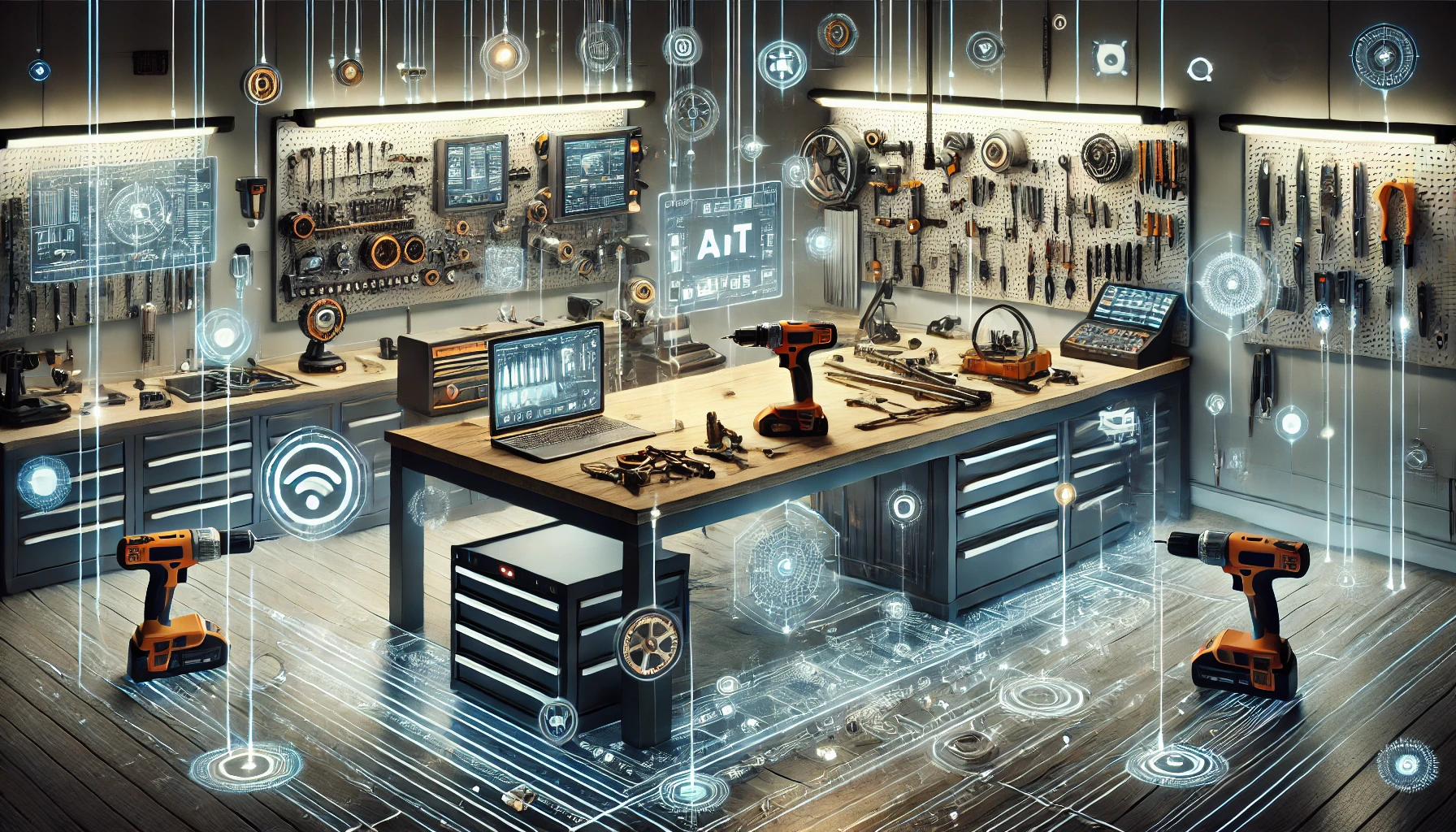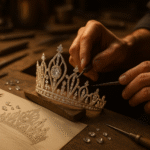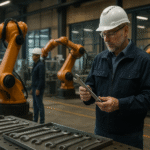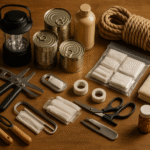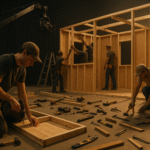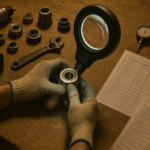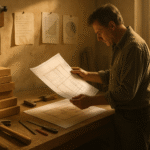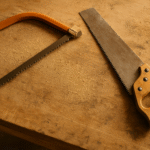It’s 2025, and your workbench is no longer just wood and steel — it’s a network.
Your drill speaks to your vacuum, your wrench uploads torque data, and your safety glasses track your every move for precision and safety.
The modern workshop is evolving from a manual workspace into a living ecosystem of intelligent tools, where AI and IoT merge to make building smarter, faster, and safer than ever.
At ToolCraftz, we’ve been tracking this transformation closely — and the future is already here.
From Workshop to Smart System
The tools we use are beginning to talk — not metaphorically, but literally.
With built-in sensors, Bluetooth chips, and smart firmware, every cut, twist, and turn is recorded, analyzed, and optimized in real time.
AI systems can now predict tool wear, adjust torque output, and even recommend replacements before breakdowns happen.
This predictive intelligence is the same principle that powers AI-driven drills we explored in Top 5 Smart Tools You Didn’t Know Existed in 2025 — tools that adapt to materials, user behavior, and environmental conditions.
As the MIT Technology Review notes, industrial IoT adoption is rapidly trickling down to small-scale workshops, giving even solo makers access to the kind of efficiency once reserved for factories.
AI as Your Silent Assistant
Imagine your bench tools syncing data to a central AI hub that learns your working habits — it notices how long you sand a surface, how deep you cut, and when you’re likely to switch bits.
Over time, it personalizes your workflow, suggesting setups that save time and improve accuracy.
It’s like having a virtual apprentice who never forgets a measurement.
This same AI backbone powers predictive systems already seen in How Tabless Battery Technology Is Changing Power Tools Forever — energy-efficient systems that intelligently regulate power draw based on tool usage.
For now, these systems are optional add-ons, but by 2030, they’ll likely be standard features in every mid-range power tool.
IoT-Enabled Collaboration
Picture this: your 3D printer signals your drill press to adjust depth based on the printed part dimensions.
Or your workbench lights automatically shift brightness when precision tasks start.
That’s the Internet of Tools — a connected web of machines designed to communicate seamlessly.
Leading manufacturers like Bosch and Makita are already experimenting with these integrations, focusing on interoperability across devices, cloud syncing, and app-based monitoring systems.
In our piece Inside the Smart Workshop: Connected Tools That Think for You, we dive deeper into how these systems connect not just tools — but workflows.
The Role of Data in Craftsmanship
Data is quietly becoming the new raw material of modern craftsmanship.
Every measurement, battery cycle, and tool calibration contributes to a larger learning loop — one that feeds back into performance and safety improvements.
According to IEEE Spectrum, small workshops adopting AI and IoT systems report up to 30% fewer equipment failures and significantly reduced downtime.
This data-driven ecosystem empowers creators to focus on creativity and precision while machines handle the grunt work behind the scenes.
Sustainability Through Smart Design
Smarter workshops aren’t just efficient — they’re more sustainable.
IoT-powered diagnostics mean fewer wasted parts, fewer tool replacements, and optimized energy use.
Combined with long-lasting innovations like tabless batteries, the next generation of workshops will generate less waste and operate at peak energy efficiency.
It’s the perfect harmony of innovation and responsibility — a theme that ties into our upcoming feature, Repair, Don’t Replace: The New Ethics of Modern Craftsmanship.
The Human Touch in an Automated Age
With all this automation, one question remains:
Where does the craftsman fit in a world of smart tools?
The answer is simple — everywhere.
AI and IoT aren’t replacing human creativity; they’re enhancing it.
The builder remains the designer, the decision-maker, the one who gives meaning to precision.
Technology simply clears the noise and amplifies skill.
As we wrote in Top 10 Must-Have Tools for Every Modern Workshop in 2025, the best tools are those that make you better, not busier — and the smart workshop takes that philosophy to its peak.
Looking Ahead
Within a few years, you won’t just walk into your workshop — you’ll log in to it.
Your bench will remember you. Your tools will greet you. Your workspace will learn from every project you complete.
That’s not fantasy — it’s the future of craftsmanship, and it’s being built right now.
And at ToolCraftz, we’ll be right here documenting every spark of that transformation.
